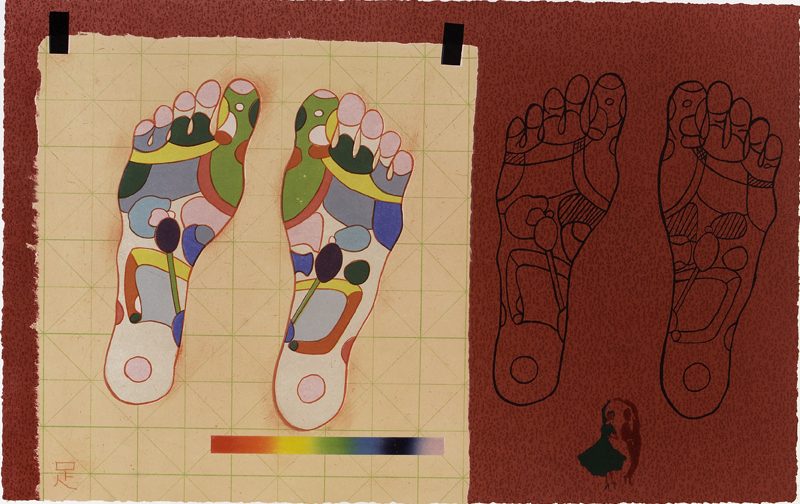The Neurosurgical Case Notes of Sir Geoffrey Jefferson
Posted onBy Karen Rushton, Wellcome Archivist/Curator, University Archive & Records Centre, The University of Manchester (Karen.rushton@manchester.ac.uk)
At the University of Manchester thanks to a generous Wellcome Trust grant we are currently working to catalogue the case files of 20th century neurosurgeon Sir Geoffrey Jefferson (1886-1961). Jefferson was the UK’s first Professor of Neurosurgery who spent most of his career at the Manchester Royal Infirmary (MRI).
The case files we hold cover Jefferson’s time working at the MRI between 1927-1940 on a wide range of neurological disorders including brain tumours, epilepsies, neuralgias, head injuries, and congenital spinal deformities. We also see references to lingering war injuries from WWI, occupational and traffic accidents, neurosyphilis, and the use of surgical and diagnostic techniques later considered to be controversial. The files themselves contain a number of record types including detailed case notes and accounts of surgery, correspondence, x-rays, and both clinical and pathological photographs.

Going into the project the first major decision centred on what information we wished to record. The Lothian Health Services Archive in Edinburgh have recently completed a similar project centred on the case files of neurosurgeon Norman Dott (1897-1973) and so it was very helpful to be able to talk to staff there about their approach to the records. Most importantly we recognised that the Jefferson collection is one of a number of neurosurgery collections held across the country and it was important to recognise its part in a wider research web and so make our catalogue comparable to that of the Dott Collection.
When dealing with relatively modern patient records considerations surrounding data protection were paramount and procedures are in place to produce a public facing catalogue with all personal information removed and a complete catalogue for use in-house and to be accessed by approved researchers. MeSH has been employed throughout for indexing purposes and provides an invaluable tool for selecting files based on conditions and symptoms. It is here where expert advice from a neurologist based within the University has aided us in creating accurate indexing terms and updating old-fashioned terminology. However, the major barrier with MeSH has arisen regarding the potential indexing of surgical procedures. As a neurosurgeon rather than a neurologist the procedures that Jefferson performed were seen as being a very important factor in the descriptive content of the catalogue, but whether or not it was appropriate to index them or not was another matter. As a thesaurus of modern medical terminology MeSH essentially is not fit for this purpose. Whilst old-fashioned terms for conditions can be updated there is no appropriate terminology for now obsolete surgical procedures such as the frontal lobectomy.
Having worked on other medical case note projects in the past, namely the Stannington Project at Northumberland Archives dealing with children’s TB files, I was well prepared for the kinds of challenges we might encounter. Nonetheless there is an inevitable variation in the content of the records and in turn the approach to outreach activities and potential researchers. As all the Stannington files related exclusively to children many of the former patients were still alive meaning we were fortunate enough to be able to interact directly with subjects of the records. Equally the subject of TB feeds very well into existing narratives on public health and has many links to social history. Neurosurgery on the other hand is much less overtly approachable to those with a non-scientific or medical background and it is here where interpretative events and blogs have been essential in drawing out less obvious themes and material such as the possibility of the use of visual material in the files by artists working in the medical humanities.

The cataloguing process is nearing completion but conservation and outreach work will be on-going as the project continues. As part of the Wellcome funding we will also be tackling several other medical collections including the work of 20th century medical illustrator Dorothy Davison, medical artwork from the teaching collections of 19th century obstetrician Thomas Radford, and papers relating to the pioneer of the artificial hip Sir John Charnley.





